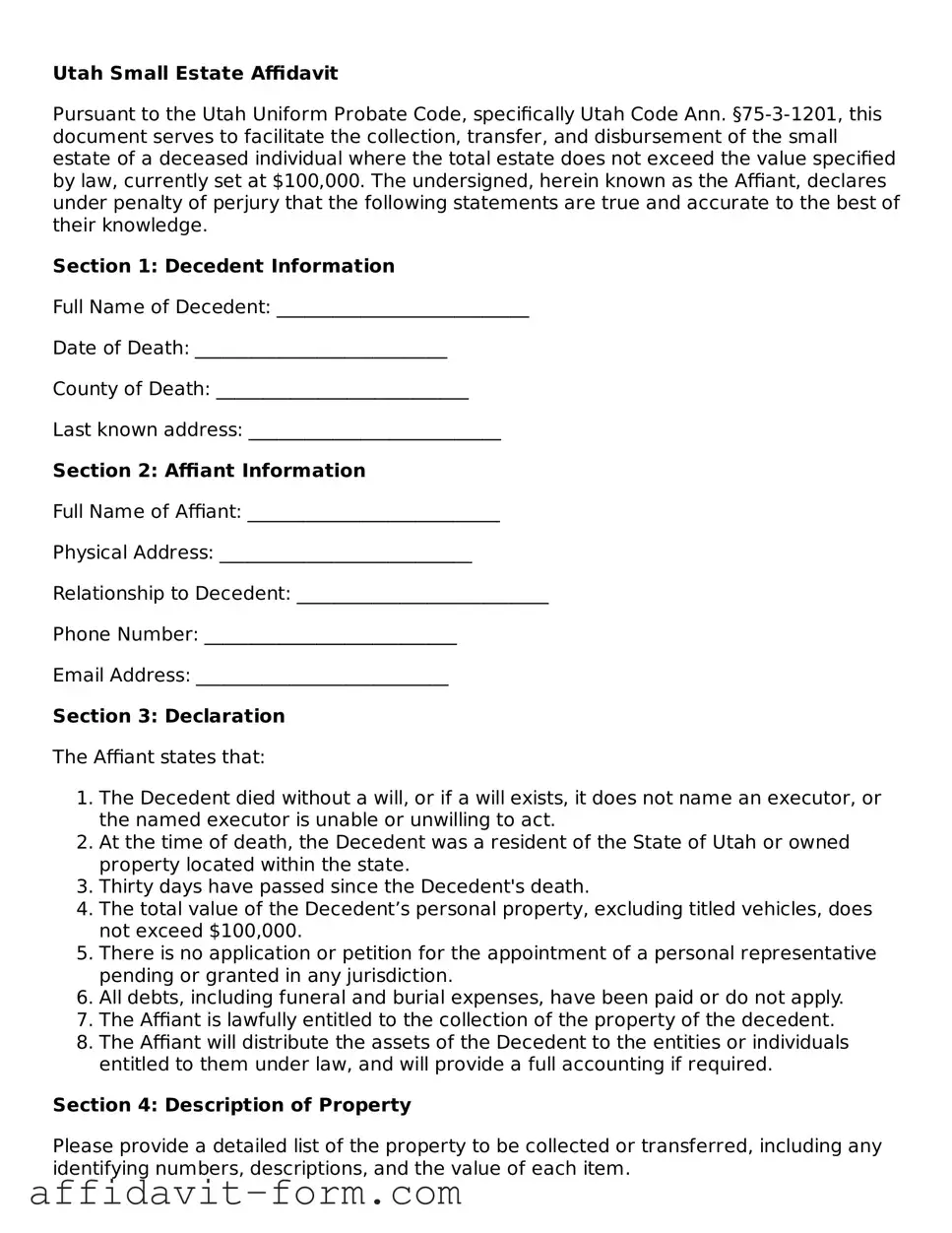Utah Small Estate Affidavit
Pursuant to the Utah Uniform Probate Code, specifically Utah Code Ann. §75-3-1201, this document serves to facilitate the collection, transfer, and disbursement of the small estate of a deceased individual where the total estate does not exceed the value specified by law, currently set at $100,000. The undersigned, herein known as the Affiant, declares under penalty of perjury that the following statements are true and accurate to the best of their knowledge.
Section 1: Decedent Information
Full Name of Decedent: ___________________________
Date of Death: ___________________________
County of Death: ___________________________
Last known address: ___________________________
Section 2: Affiant Information
Full Name of Affiant: ___________________________
Physical Address: ___________________________
Relationship to Decedent: ___________________________
Phone Number: ___________________________
Email Address: ___________________________
Section 3: Declaration
The Affiant states that:
- The Decedent died without a will, or if a will exists, it does not name an executor, or the named executor is unable or unwilling to act.
- At the time of death, the Decedent was a resident of the State of Utah or owned property located within the state.
- Thirty days have passed since the Decedent's death.
- The total value of the Decedent’s personal property, excluding titled vehicles, does not exceed $100,000.
- There is no application or petition for the appointment of a personal representative pending or granted in any jurisdiction.
- All debts, including funeral and burial expenses, have been paid or do not apply.
- The Affiant is lawfully entitled to the collection of the property of the decedent.
- The Affiant will distribute the assets of the Decedent to the entities or individuals entitled to them under law, and will provide a full accounting if required.
Section 4: Description of Property
Please provide a detailed list of the property to be collected or transferred, including any identifying numbers, descriptions, and the value of each item.
_______________________________________________________
_______________________________________________________
_______________________________________________________
_______________________________________________________
Section 5: Signatures
This affidavit is executed under the penalties of perjury. The undersigned Affiant swears that the information provided herein is accurate and complete to the best of their knowledge, and that this affidavit is made to collect the property of the Decedent as entitled by the laws of the State of Utah.
Signature of Affiant: ___________________________ Date: ____________
Printed Name: ___________________________
State of Utah )
County of ____________ ) ss.
Subscribed and sworn to before me on this ____ day of ____________, 20__.
__________________________________
Notary Public
My commission expires: ______________
